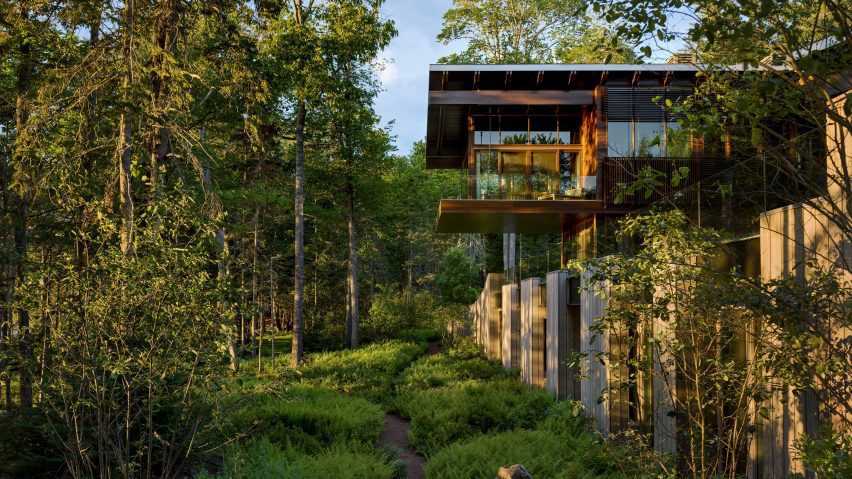
SPAN Architecture creates retreat on remote Maine coast
New York City studio SPAN Architecture has completed a remote retreat in Maine on a property that includes gardens and a teahouse informed by Chinese architecture.
Named Astor Residence, the home is located on Maine's rugged coast, overlooking the waters of Western Bay. Encompassing roughly 200 acres (80.9 hectares) of land, the residence serves as a retreat for a New York City couple.
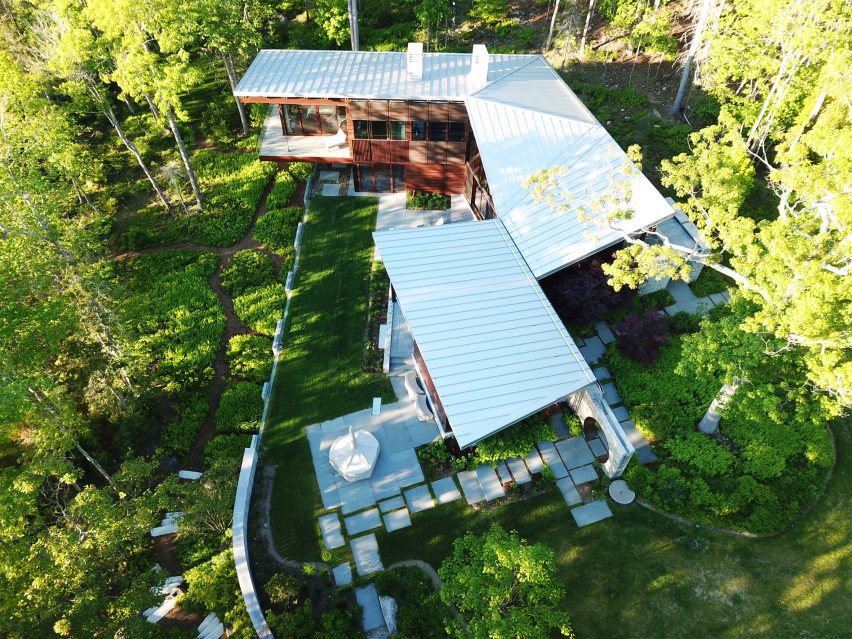
The property once belonged to American socialite Brooke Astor, who gained an early interest in China through her travels as a child when her father served in the US military. Her secluded Western Bay property served as a getaway for her and close acquaintances, where she built a pavilion and tea house informed by Chinese architecture.
Its current owners first engaged Karen Stonely and Peter Pelsinski of SPAN Architecture several years ago for an apartment in Manhattan. They chose to work with the architects again to restore the property's existing tea house and pavilion, as well as create a new guest house and primary house for the owners, their family, and friends.
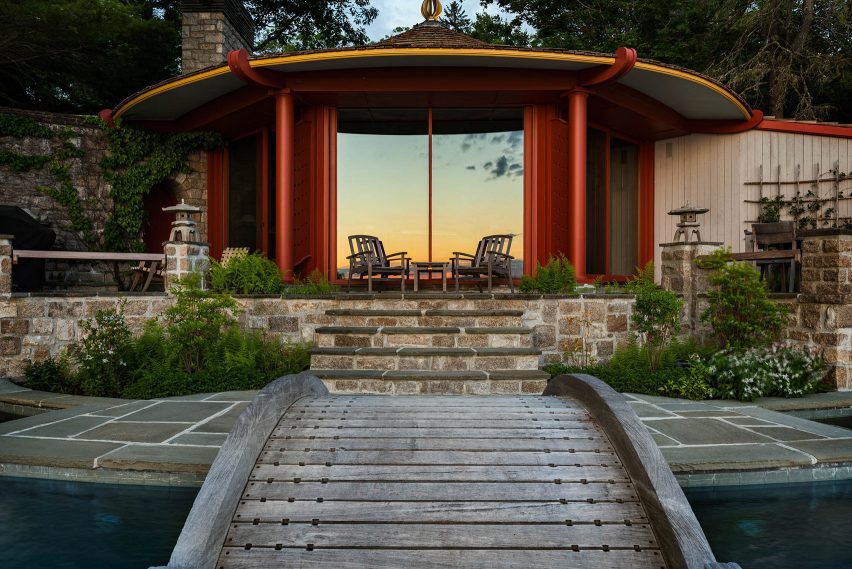
"The meandering garden and structures by late architect Robert Patterson have been meticulously restored and modernised," said SPAN Architecture. "SPAN's larger masterplan for the property incorporates these accessory structures – the historic, Chinese-styled cottage now called the Pool Pavilion and the Teahouse as it was – to complement a new guest house as well as a new main house."
The angled rooflines of both these structures offer views of the bay beyond the owner's living spaces, and create sheltered outdoor areas for socialising and gathering.
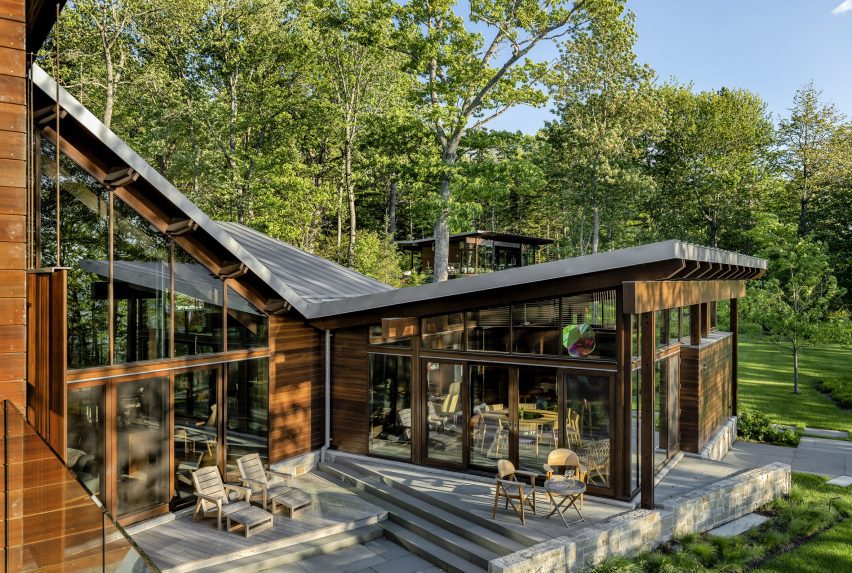
SPAN Architecture created the guest house first, as a way of testing certain design ideas that would later be applied to the main residence. This smaller building sits slightly further away from the water than the main house, which also helps keep it out of sight.
The main residence's lowest level comprises five bedrooms and is partially sunken into the landscape, opening on one side to the exterior. This creates a plinth for the upper stories, which contain all of the home's public spaces, and the owner's bedroom above.
"The experience of walking through the house parallels that of meandering through the landscape," said SPAN Architecture. "The same way that the landscape offers ever-changing vistas, surprise, delight and a sense of discovery, the plan creates a narrow entrance that gives just a hint, to visitors, of the open, double-height living space beyond, with the kitchen in another direction entirely."
The primary bedroom occupies the top floor of the house and enjoys a wraparound terrace that overlooks the other outdoor spaces. Full-height glass walls on three sides create a complete immersion in the site's lush natural surroundings.
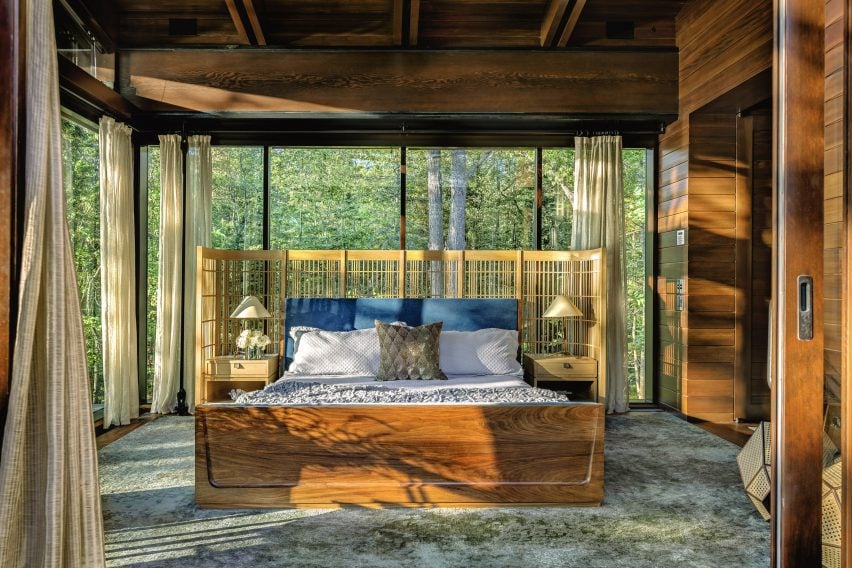
SPAN Architecture's material palette was based on local materials, as well as research on the tea house and pavilion's original architect. Local cedar, Douglas fir, and stone from the same quarry as used for the earlier building were applied throughout the interiors.
An eclectic selection of furniture pieces rounds out the decor. "A charming aspect of the furnishing is that old and new happily co-exist; antique and vintage decor contrasts with other, more modern sculptural elements," said SPAN Architecture.
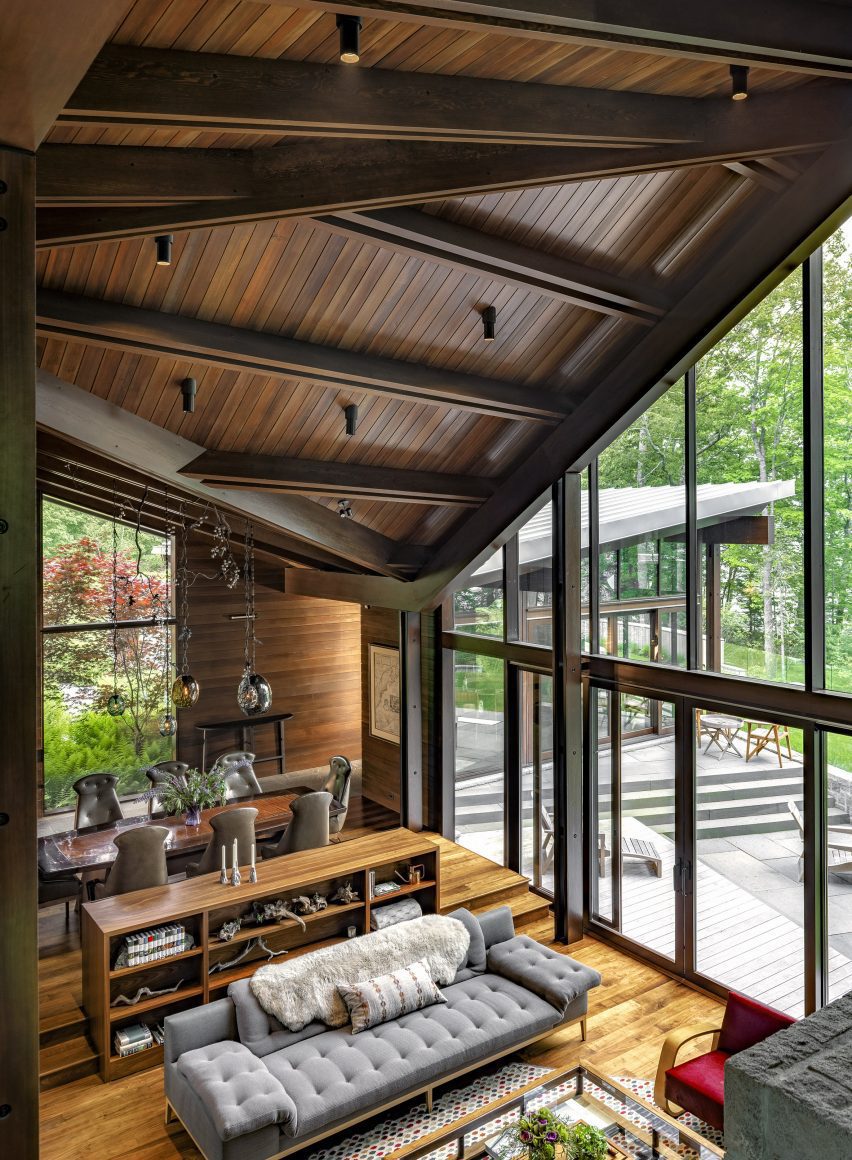
Other waterfront homes in Maine include a cedar-clad home by Caleb Johnson that sits on sturdy wooden stilts, and a home split into two parts connected by a tall glass atrium that architects Maria Berman and Brad Horn built for themselves on Vinalhaven Island.
The photography is by Rob Karosis.